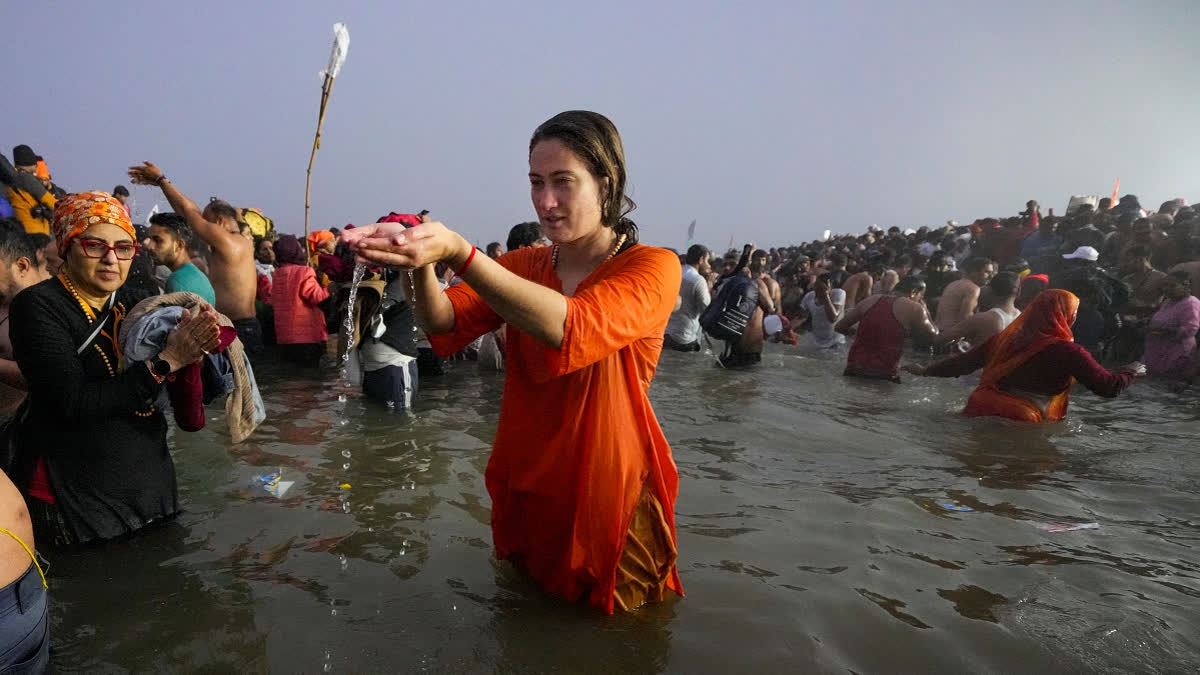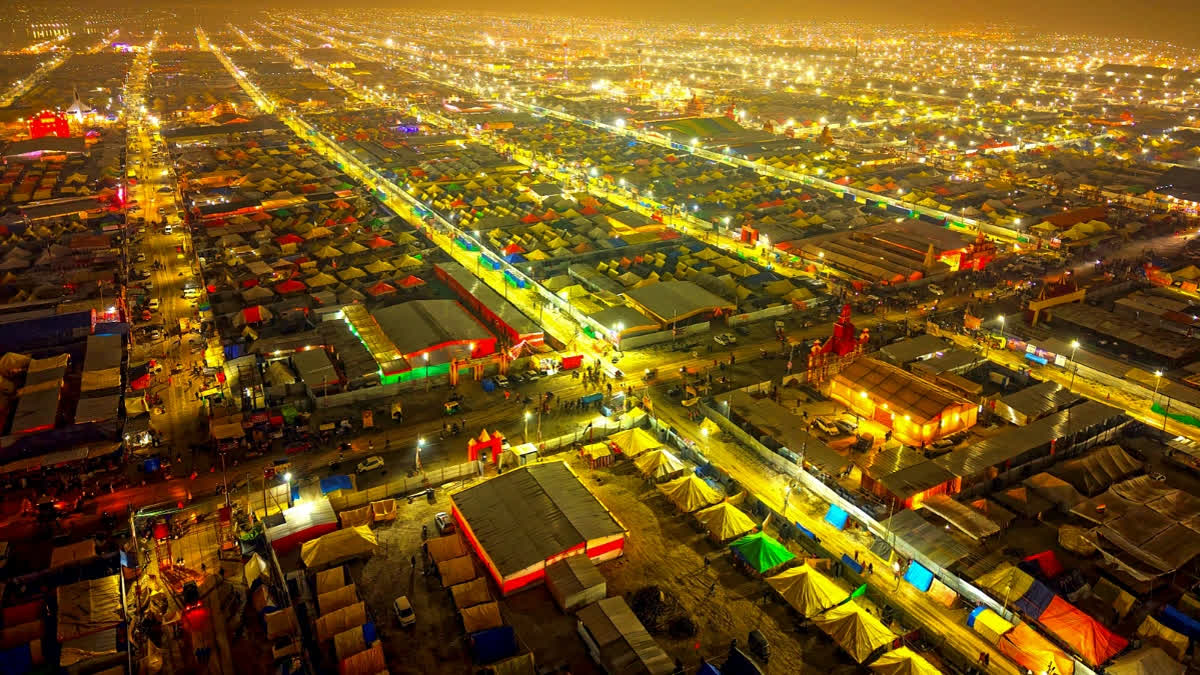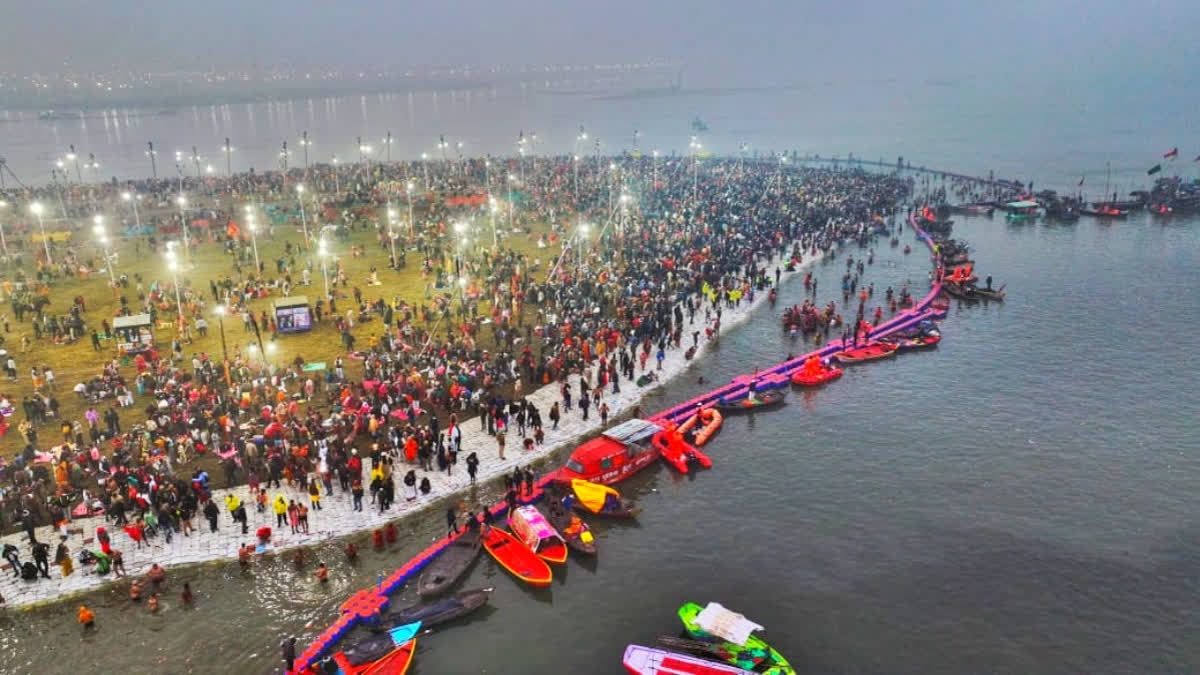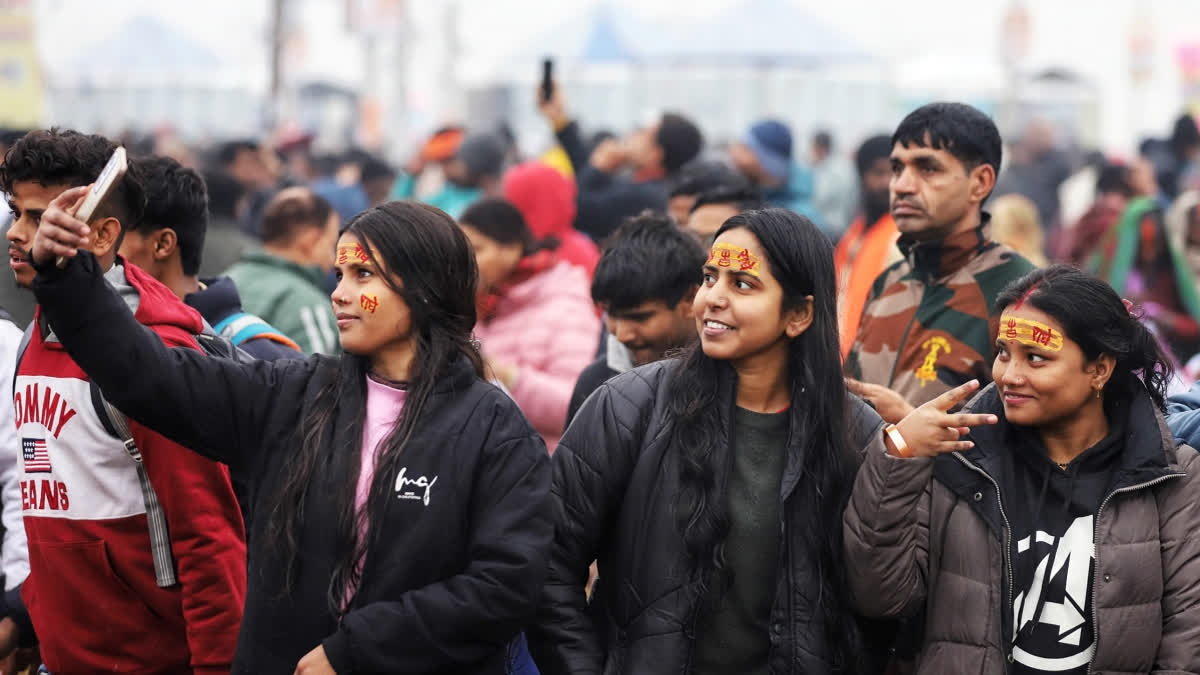Every twelve years, a temporary city is built on the banks of the River Ganga in Prayagraj in India's most populous state, Uttar Pradesh. The city is complete with roads, pontoon bridges, toilets, and temporary housing. This year, the city has taken shape again and millions of visitors have settled in tents, hotels, and luxury domes. There's so much devotion and excitement for Maha Kumbh – A 45-day-long Hindu pilgrimage that began on January 13 and will go on till February 26. This is the first Kumbh of its kind in 144 years.
People are bathing in the sacred Ganga and Yamuna rivers, calling it a holy dip. This is unlike any other pilgrimage as it is held every 12 years. The world's largest gathering of people, Maha Kumbh is a mega event with more than 600 million devotees expected to visit – three times more than the population of Russia. This is also more than thrice the number of visitors compared to the last Maha Kumbh held in 2013. This is a record-breaking projection but not surprising. Interestingly, many of the visitors are youngsters which makes this Maha Kumbh one of the first in its history.

Taking Spirituality To Social Media
With a smartphone in hand and a holy bath reel in the making, these young pilgrims are connecting to their roots. They are documenting their Kumbh journey and reliving the tale they heard as children in their own way. Gen Z is the most tech savvy generation so they are effortlessly blending social media with spirituality and vibrancy with devotion. On the first day of the Kumbh, Instagram had more than 350,000 posts with the hashtag #kumbh. It's not just Hindu pilgrims but also young culture enthusiasts and they are all there for the famous Kumbh bhandaras, the famous free food stalls. There are young researchers studying waste management and people management. There are also some who want to be religious spectacles themselves by embarking on the 600 kilometer journey to the Maha Kumbh on skates, while some are riding bicycles for miles to attend Maha Kumbh.
"My research is about sustainable development in rural areas of India and religious communication. It is a really well organized event, though the crowd is so big that there are challenges in managing all of it. However, there's a lot to learn," says Amol Irba, a PhD student studying Environmental Science at Mumbai University.
22-year-old Ishani Naresh, who is in Prayagraj with her family, says it's a privilege. "I wasn't interested in visiting Kumbh. I was like, I will get lost like they show in old movies. Coming here is amazing. So many people and so much culture. I have never seen or heard anything like that before. I didn't know about Nagas and holy dips in the river. This is so much fun," says Ishani, who is a digital marketing student in Gurugram.

Where there's Gen Z, There Are Influencers
The Maha Kumbh may be a religious gathering but it is also a Gen Z phenomenon. This is the first Maha Kumbh in the age of content creators and the first with influencers, who are churning out daily content, hosting podcasts, guiding meditations, hosting workshops, and promoting products. They are seen promoting box beds or food courts by the Ganga. This army of influencers also brings capitalism with it, making this Maha Kumbh a marketing affair with all kinds of companies shelling out a lot of money.
In 2013, the Kumbh market spent 1,500 crore rupees and today, it is ₹4,500 crore, which is a 300 percent increase. A lot of this money is going to these influencers. At least 334 influencers are part of paid sponsorships at the Kumbh. They are receiving anywhere between ₹1 lakh to ₹50 lakh for campaigns. They are being roped in to amplify brands. These influencers are not just from India, at least 21 social media stars are from abroad – Finland, Singapore, and Guyana. Clearly, the Kumbh has come a long way. For decades, it was typecast as a destination for aged pilgrims or religious fanatics. Those days are gone. Today, youngsters are flocking to the Maha Kumbh from India and abroad. Thinkers believe that whatever their inspiration and motivations are, they are reconnecting with their culture and, in turn, they are helping this spiritual festival evolve as an economic hotspot and a hub of India's vibrant culture.

Upping the game
The first recall of the Kumbh Mela for the average Indian is a Bollywood movie that showed a child getting lost there, because that is the reputation of this event – crowds, stampedes, separations. Over the years, Kumbh has witnessed fires, a bridge collapse, and multiple stampedes. Hundreds of people have died, thousands have been injured, and many more have gotten lost. According to 2001 figures, 4000-6000 pilgrims have lost their relatives everyday in the Kumbh crowd.
Those days are gone. The Maha Kumbh of today is bigger and better. It is a sample to study crowd management, logistics, and waste management. More than two dozen prominent institutes and researchers from Stanford and Harvard are on the ground to study this year's Kumbh Mela. It has undergone a major transformation with over ₹7,000 crore allocated to the mega affair.
High-tech security
Security has gone digital with AI-enabled cameras and drones surveilling the area. They are detecting crowd density and barricade jumping. There are also AI-enabled face recognition systems at security checks. A realtime Google chat feature for visitors and underwater drones, which are deployed for surveillance to ensure safety during the holy bath. Apart from that, the infrastructure has also been updated. Authorities say that $1.85 million have been spent on waste management alone with more than 150,000 toilets set up.
There's an AI-driven parking system, pilgrims can pre-book their parking spots and AI will predict parking patterns. There are EV charging stations, vehicle maintenance stalls, and special transportation with thousands of buses, trains, and helicopters are plying to ensure a seamless commute, making it a remarkable upgrade for any convention, let alone a spiritual or religious one.

A money spinner event
However, one may wonder: Why make it bigger than it already was? A simple response would be – a sense of duty and respect, a need for security. Social thinkers view Maha Kumbh as big money. As per 2013 figures, Maha Kumbh generated ₹12,000 crore rupees revenue. And the half Kumbh held every six years also generates a lot of money. The last one was held in 2019 and back then, it generated ₹1.2 lakh crore.
Professor Himanshu Jha, Economist and Author, sees it as a big ticket event and a hub for economic activity. "It creates jobs and generates revenue. Maha Kumbh is expected to raise ₹2 lakh crore rupees this year. Daily items like water bottles and flowers are expected to generate ₹17,000 crore rupees and ₹800 crore rupees respectively. Hotels, luxury domes on the riverbank, and transportation, all of these show that Maha Kumbh is a money spinner which has enough potential, economically and culturally," says the economist.
Read More:



